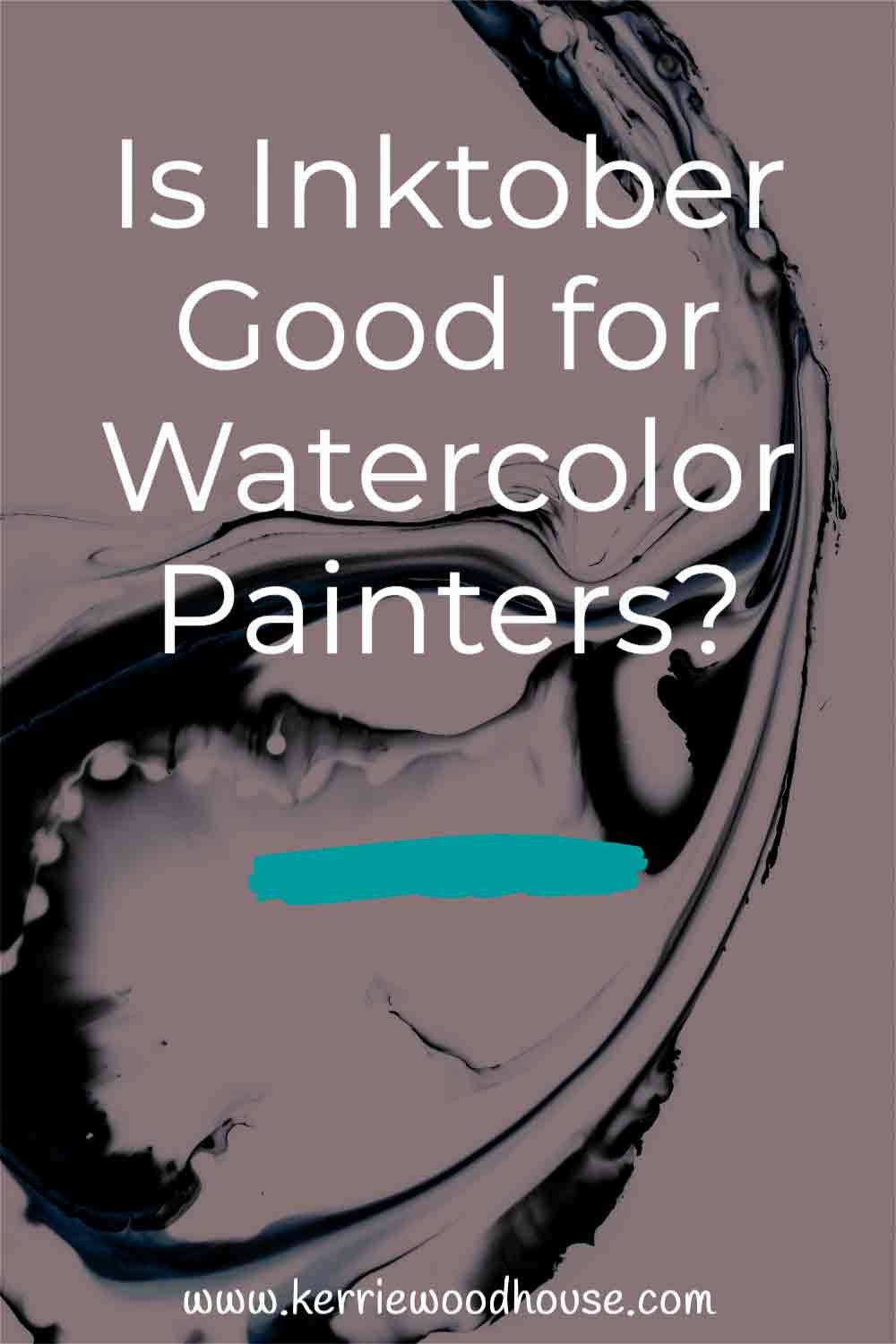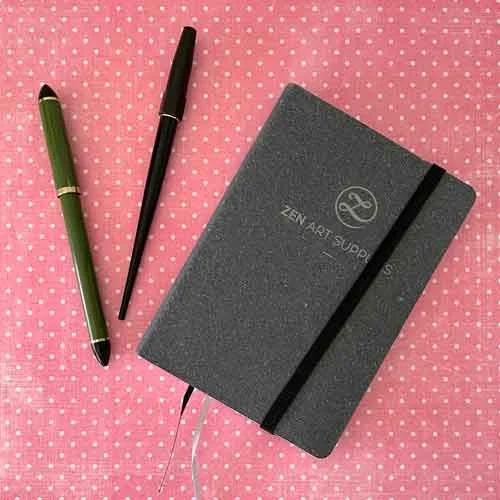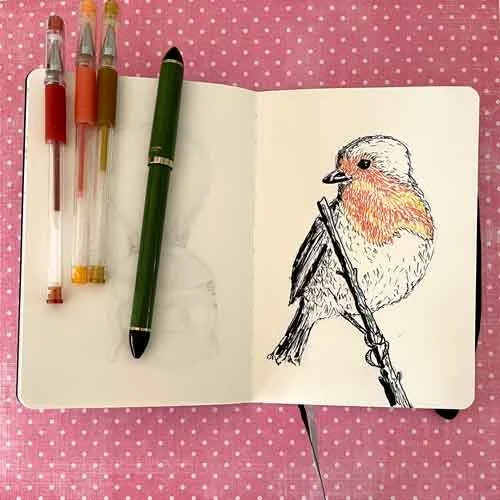Is Inktober a Good Challenge for Watercolour Painters?
Disclosure: This post may contain affiliate links. That means if you buy something we may possibly get a small commission at no extra cost to you.
Inktober is an annual art challenge that anyone with a pen and a piece of paper can enjoy. And that most definitely includes watercolour painters!
There are plenty of benefits to participating for you and your watercolour paintings.
If you think Inktober might be for you, I have a few tips and suggestions about how to design your own Inktober project and boost your watercolour skills.
What is Inktober?
Inktober is a global art challenge that was created by Jake Parker and currently runs for the month of October every year. It is free to participate in and you can adhere to the guidelines as strictly as you choose. The point is just to make some art.
Ideally, the plan is to make an ink drawing every day. You could stick to that, or add some other media - like watercolour perhaps? There are prompts that you can follow. Or not.
See, fun and flexible. What’s not to love?
There is always a lot of happy buzz generated around challenges like this and that energy can be infectious and be just the thing you need to get you in the habit of creating regularly.
Of course, for some, this sort of worldwide art challenge is intimidating and demotivating. Painter, know thyself and just do you.
If you need a little more help on this, head over to this article which talks about the pros and cons of art challenges and how to choose the best one for you.
Is Inktober Good for Watercolour Painters?
Since Inktober is a challenge about ink drawing you might be wondering if it is worth your time as a watercolor painter. Here's what I think:
Inktober could Reinvigorate your Watercolour Painting Practice
If you are feeling a bit blah about creating, changing up your medium can breathe a bit of life into your artsy endeavours and make it fun again.
A short term project like this is perfect. Spend a month doing 30 drawings or less in ink and I bet you will have a whole load of new ideas and be looking forward to getting out your paints again by the end of it.
Creativity is a bit magic like that.
Yes, while the Inktober guidelines recommend a daily drawing in October, there is nothing stopping you from deciding you are going to do one drawing a week or something like that.
Use Inktober to Build some Momentum in your Watercolour Painting Practice
If like me, you paint for fun, you probably already know that the most joy and wellbeing come from the little-and-often approach to painting.
One of the reasons we choose watercolour is that it is so easy to set up and clear up that we don't need a massive space or a clear day to tackle a painting session.
Even so it can be hard to be consistent in our painting practice. (More on why that might be in my next point.)
Talking about being consistent can make it sound like painting is going to become a bit of a chore. But actually I think being consistent leads to a bit more of a joyful painting experience.
Each day feels a bit easier and therefore more fun, if you paint frequently.
If you are inconsistent and end up with large time lapses between painting you can sometimes end up feeling like it is always your first time painting. Any awkwardness or that noisy inner critic is much easier to ignore when you build a habit of painting regularly.
A challenge like Inktober is an excellent way to kickstart that regular painting and drawing habit.
Beat the creative resistance that comes from too many decisions
One of the things that stops us from actually making some art is all the decisions that are required prior to getting a brush to paper.
From what subject to paint,
to what substrate and size,
to style,
and painting medium,
the list of decisions can be enough to make us put painting on the Maybe Tomorrow List. (Again.)
Embrace the energy of Inktober, design your project for the month and you are ready to begin.
Brilliant.
Did all that stuff I was saying about painting decisions making it hard to actually get down to painting resonate?
Aside from Inktober I have another suggestion for you. Choose a watercolour tutorial starter bundle and you will find I have done all of that decision making for you.
Even the drawing if you like.
So you could sign up today and be painting in a few minutes. Just saying.
Build Your Drawing Skills with Inktober
Drawing is a fundamental skill and a bit of drawing practice can only make you a better painter.
I try not to talk about things like ‘fundamental skills’ because it sounds boring and reminds me of school and if you are anything like me that is not what painting is about.
But it is a very liberating thing to be able to choose any painting subject you fancy because you are confident you can give drawing anything a jolly good try.
By the way, if you are a painter who doubts your drawing abilities I am working on a course just for you.
At this stage I am planning to call it something creative and ingenious like ‘Drawing for Painters’. If you want to be the first to know when I finish it, pop your deets below and I’ll make sure I keep you in the loop.
YES, I’d love to know when Drawing for Painters Opens! 😃
Ink can behave a lot like watercolour
If you can’t resist getting your brush out, you can still use ink and treat it a lot like watercolour.
Remember that ink not only comes in pens but is also available bottled. If you want to stick to the classic traditional black, you can create a wonderful collection of black and white drawings that include a bit of tone courtesy of the ink.
Dilute the ink to various strengths to create your own value scale and add plenty of depth to your drawings using just the ink.
Eggs and Sunshine - Ink and Watercolour in Sketchbook - Kerrie Woodhouse
I did exactly this on my egg painting above. And then once it was dry, I couldn't resist adding a splash of watercolour. Easy work since all the dark values were already in the drawing after the ink stage. The transparent watercolour just ends up being the cherry egg on top.
There is also a glorious range of coloured inks these days - I find them rather irresistible. Just do a little research before you commit to purchasing a bottle. Some inks are waterproof and some are not. This is the sort of thing one wants to know ahead of time!
Ideas for Designing Your Own Watercolour Edition of Inktober
If you want a few ideas for designing your own Inktober project I’m happy to oblige. My suggestions below are far from exhaustive.
Mix and match and come up with your own unique approach.
Just keep it simple and work small so that it is easy to complete regularly in your busy life.
Traditional black ink drawings in a sketchbook
This is the classic option I am going for this year. I’m really enjoying drawing in this little sketchbook.
The size is just right B6 (just shy of 5x7 inches) and the paper is silky smooth. This is a lovely change from the textured watercolour paper I use for painting and it means the pencil erases very cleanly.
I am using my latest pen - a Sailor Fude - that’s the green one in the image below which has a very funky nib. New to me and rather marvellous for getting multiple line thicknesses out of just one pen.
Have you got a new pen or an older one that you hardly ever use? Inktober might just be it’s moment.
Coloured Pen drawings in a sketchbook.
If you find it hard to forgo a splash of colour I understand completely. We watercolour painters appreciate the full rainbow.
By day 3 in my little project I couldn't resist grabbing my gel ink pens and adding some colour. They were even metallic so that tiny pop of bling made my heart very happy. And putting those coloured pen marks on the silky cream paper in this sketchbook was a dream.
Why not choose to do all your Inktober drawings with whatever coloured pens you happen to have to hand.
Not to mention that needing only dry media - pens and a sketchbook makes this a very portable endeavour.
Use bottled ink and think of it like watercolour.
This will need watercolour paper or a watercolour sketchbook. I’d suggest doing a line drawing and then using bottled ink and a little palette with little wells so that you can mix various strengths of ink and water in order to get some lights and darks.
Use these to build up the values to bring your drawing to three dimensional life. This is a little more complex of an approach but focussing on seeing the values in your subject is fantastic practice and will really make your future paintings stronger.
Use a mixed media approach
Start with a line drawing in ink and then add whatever additional supplies make you happy. I use an approach like this in my class Mix It Up.
I take you through my 10 minute process to create a cute little whimsical character.
A perfect approach to use in a daily challenge like Inktober.
Try a month of Line and Wash
Inktober for watercolour painters screams line and wash to me.
This is a very common watercolour technique and great fun to do.
You get the benefit of putting in a line drawing in ink with as many details as you like, and then add the loose splashy watercolour. I like the idea that those two techniques really complement each other.
I wrote quite a bit more about the line and wash technique with lots of examples which you can find here.
Whichever approach you end up choosing I hope you have a lot of fun.
May you find a project that nurtures your creative heart this Inktober.
(And any month in the year!)
Are you on your own painting journey?
One of these might be useful…














